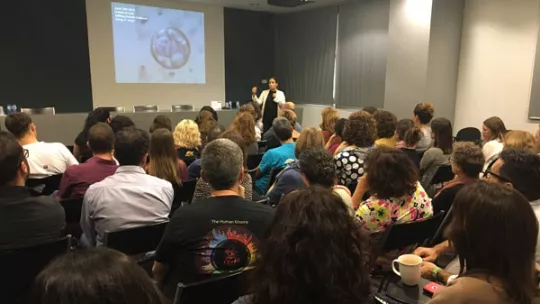Speaker: Giacomo Cavalli, PhD - Institute of Human Genetics, CNRS, 34396 Montpellier Cedex 5, France - University of Montpellier, Montpellier, France
Presentation
Organizers: IRB Barcelona
Date: Friday 19 June 2020, 12.00h
Hosts: Ferran Azorín, PhD & Modesto Orozco, PhD
Biomed Webinar
ABSTRACT:
Giacomo Cavalli1,2
The eukaryotic genome folds in 3D in a hierarchy of structures, including nucleosomes, chromatin fibers, loops, chromosomal domains (also called TADs), compartments and chromosome territories that are highly organized and can be reprogrammed in order to allow for stable memory as well as for regulatory plasticity, depending on intrinsic and environmental cues. Polycomb Group (PcG) and trithorax group (trxG) proteins form multimeric protein complexes that regulate chromatin via histone modifications, modulation of nucleosome remodeling activities and regulation of 3D chromosome architecture. These proteins can mediate epigenetic inheritance of chromatin states but also dynamically bind to some of their target genes, thereby affecting cell proliferation and differentiation in a wide variety of biological processes. Polycomb group proteins form two main complexes, PRC2 and PRC1, which coregulate a subset of their target genes, whereas we have shown that other processes, such as cell proliferation, are regulated specifically by one of the complexes. Our progress in these fields will be discussed.
Acknowledgements
This work was supported by the European Research Council Advanced Investigator grants (3DEpi), by the Horizon 2020 program (MuG), by the Association pour la Recherche sur le Cancer, by the Fondation pour la recherche médicale (FRM), by INSERM and the ITMO Cancer (MMTT project), by the INCa, by MSD Avenir Fund (Project GENE-IGH) and by the CNRS.

